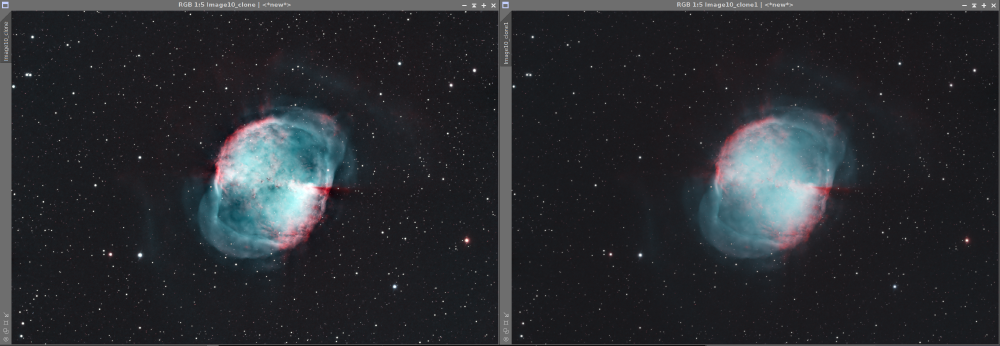Dumbbell Nebula
Aug 5, 2024
Dumbbell Nebula
| Other names | Apple Core Nebula, Messier 27, NGC 6853 |
| Type | Planetary Nebula |
| Distance | 1360 ly |
| Size | 2.8 ly |
| Location | Vulpecula |
| Captured | Aug 5, 2024 |
| Capture type | Narrowband |
| Total time | 6 hours |
| Frames | SHO 12x600' each |
| Telescope | Celestron EdgeHD 11 |
| Camera | ZWO ASI294mm |
| Tripod | iOptron CEM70-EC |
M27 The Dumbbell Nebula - Beauty From A Dead Star
This is the Dumbbell Nebula, also known as the Apple Core Nebula. It’s a planetary nebula that’s not too far from us. Normally planetary nebula are extremely difficult targets to capture because they’re tiny, but the Dumbbell Nebula is really close to us, only around 1,360 lightyears away. This one you can actually see with just simple binoculars. You won’t observe much color it it, mostly just a bright hase that’s circular and bigger than a star, but you can see it.
Is a Planetary Nebula a Planet or a Nebula?
Generally astronomers are good at naming things, but in this case, I think they made things more confusing. A “planetary nebula” is a small nebula that’s spherical in shape, which is why they’re called “planetary”. Small, spherical nebula doesn’t quite have the same ring to it.
Planetary nebula are often the expanding, ionized gas from an exploded star. In the case of the Dumbbell Nebula, the star in the center of all of this is a white dwarf that is the dead remains of a main sequence star that went supernova. What we see here is the cast off hot gas from that supernova.
When a main sequence star has enough mass to go supernova it has options for what comes next. If it’s a really massive star, it’ll turn into a black hole, it’s nuclear fire not hot enough anymore to push against gravity. If it’s not quiet large enough, it’ll become a neutron star, some of the weirdest objects in the universe. I should write an article some day about all the weird things neutron stars do. The final option is what we see here, gravity wins the battle on the inside, but the outside is shucked off to make a planetary nebula, what’s left behind is a white dwarf.
White dwarfs no longer fuse atoms it has no source of heat once it collapses. If you give the white dwarf a few billion years (well, more than a few really) you can get a “cold white dwarf”. Which is essentially an object much like a planet, cold and dense, except really really dense. But it’d have a surface you could touch and walk on if you could survive the immense gravity.
HDR Multiscale Processing
One cool thing about this image is I’ve used what’s called an HDR Multiscale Process on it. This allows me to achieve high dynamic range by compressing the dynamic range of over exposes areas. You can see in the above image the results. I was able to HDR the core that was over exposed, and in doing so, that allowed me to increase the dynamic range of everything else, so you get an image where the core isn’t blown out, and everything else is clearly visible with nice contrast.

